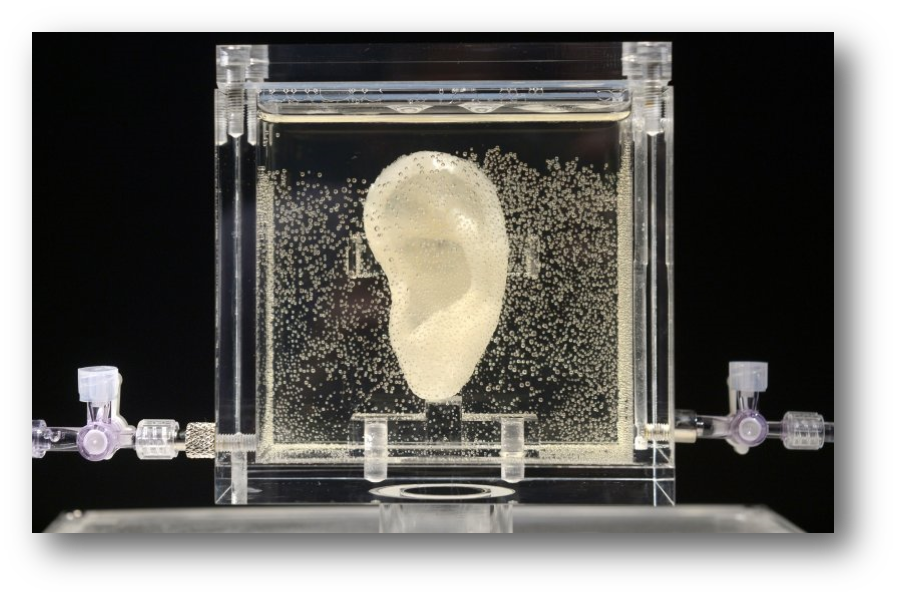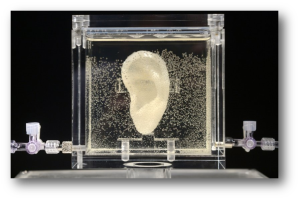Bioengineering is playing an important role in medical area. For instance, tissue engineers can graft layers of skin grown onto wound, helping to heal the burnt part. The researchers are also working to develop artificial organs for transplantation. Though Bioengineering works for us in its own way, it seems nothing related to arts. However, the study does reach toward arts nowadays.
Van Gogh, one of the most well known artists in arts history, and his famous amputated ear were involved in the replica by Diemut Strebe. The replica might be the thing closest to the real one as we can get now.
Everything began from Lieuwe Van Gogh, the great-great-grandson of Vincent’s brother,’s donation of a chunk of the inside of his ear persuaded by Strebe for the project. She then worked with the partner from “who’s who” to grow the ear cells on a polymer-based scaffold that approximated the shape of Vincent’s ear. The shape was from the knowledge of the famous artist photo.
This entire idea of artistic experiment was inspired by a thought experiment dating back to ancient Greece, Theseus’ paradox, asking whether the object with all of its parts replaced is still the same thing or not. The scientific method led Strebe this innovative way。
Their work—being called “Sugababe”(comes from its sugar white color)—is currently shown at the Ronald Feldman Fine Arts Gallery in New York City.”(In general), science and art go very well together,” she said. “The Renaissance (period) showed that. Science can produce mediums for art, and perhaps art can give back to science.”
With this surprisingly amazing piece, Strebe is leading her team to create a new version of the ear with more genetic relationship to Van Gogh’s ear. “Sugababe”, made from Lieuwe ’s DNA,was related to the original ear. But the involvement of the women unrelated to Van Gogh in family line causes different mitochondrial DNA To find desired mitochondrial DNA, Strebe tracked down a descendent of Vincent’s sister and got another van Gogh family biological sample.
Next, Strebe turned to Jef Boeke, director of the Institute for Systems Genetics at NYU Langone Medical Center. He and his research group is working for cloning the mitochondrial DNA of Vincent’s sister’s descendants as well as replacing the mitochondrial DNA in Lieuwe ‘s cells with that of the other donor.
Though that may sound simple, the actual work is harder than usual. No research group has ever succeeded in doing so. Although it is fun to be part of a cool art project, figuring this out has important medical applications, and is “absolutely the reason we are involved with this,” he added.
On the other hand, Strebe also worked with an auditory scientist to give “Sugababe” a hearing component. However, the ability to hear doesn’t mean the ear itself can actually hear sounds, “the ear is missing Vincent to make that work”, Strebe said. A microphone is contained in the ear with a computer program processing the sound into static bursts, which mimic how the brain perceives sounds. They then playback through a speaker for visitors to hear.
For Strete, her hope is that people may see through the “creepy” outside for something inside.
“These images are very important documents of our time and that try to capture our time,” Strebe said.


